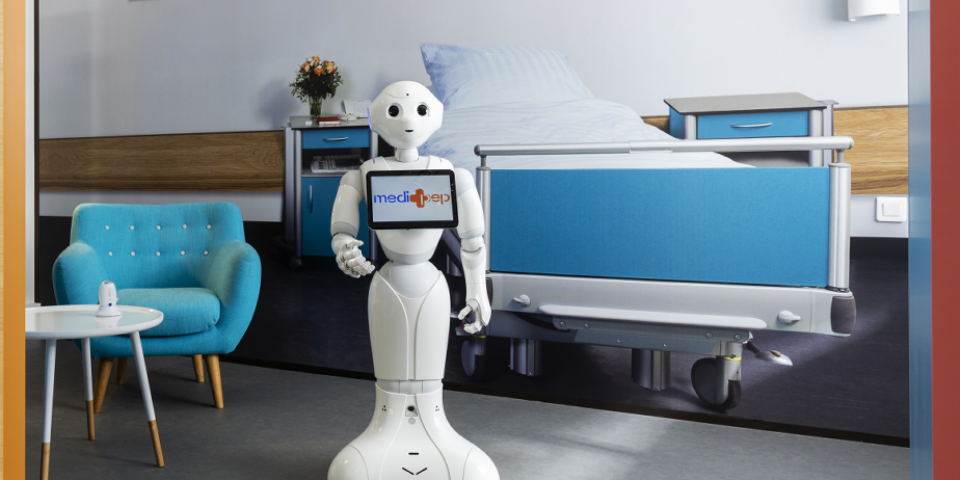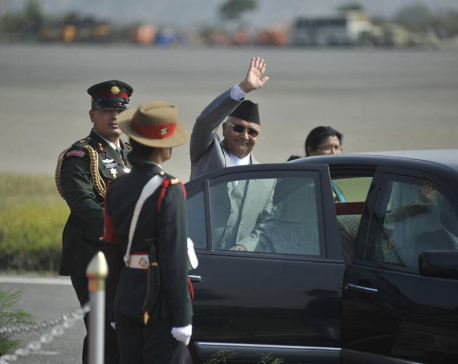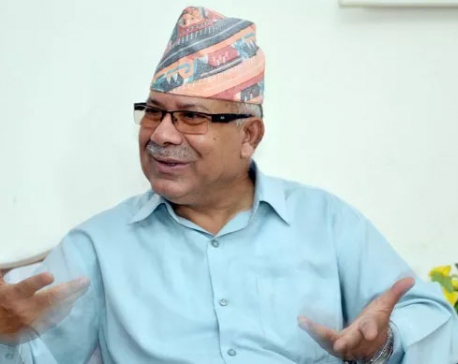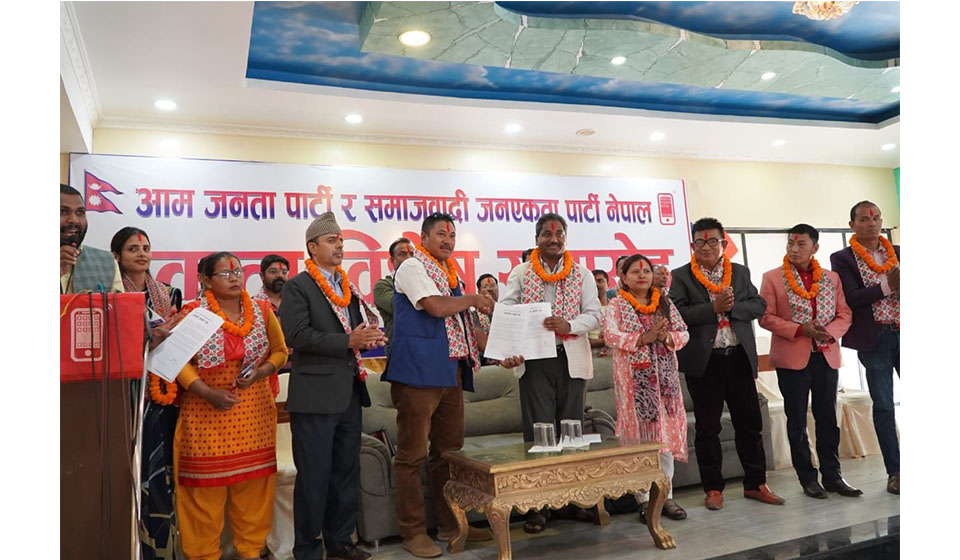
OR
Can the pandemic inspire growth of robotics and automation in Nepal?
Published On: December 5, 2020 08:01 AM NPT By: Ayush Giri


Ayush Giri
Ayush Giri is a PhD student at the University of California San Diego with the research focused on surgical robotics.news@myrepublica.com
More from Author
The government must step up to assume the responsibility to pilot Nepal’s further transition to the robotic era. It needs to pen a national strategy pertaining to the growth of robotics and automation.
Shortly after the nationwide lockdown was imposed by the government in Nepal in March, the increase in the number of cases threatened the safety of healthcare workers and generated fear in the patients and frontline workers alike. Amidst this soaring crisis, Robotics Association of Nepal and Sagarmatha Engineering College with support from UNDP developed a remotely operated robot named ‘SISTER’ to deliver medicines, food, and information to patients in the isolation wards. SISTER was provided to multiple hospitals across the country to aid in their operation. Concurrently, Paaila Technology, a Nepal-based robotics and AI company, modified their previously built navigating robots to nursing robots for use in isolation wards in hospitals. Paaila technology and Nepal Innovation Center also worked on low cost ventilators made from locally available resources to meet the inflated demand of ventilators created by Covid-19.
The onset of a technological revolution fueled by the advancements in robotics and artificial intelligence (AI) among other disruptive technological breakthroughs is underway. Owing to the ongoing global health crisis, these advancements are now required more than ever to aid in the fronts like prompt diagnosis, treatment of the infectious disease, and in ensuring the safety of the frontline workers. Therefore, it was imperative that Nepal too embraced the innovations in robotics and automation to tackle the challenges brought by the pandemic.
Mostly limited to the local resources due to the restrictions on international flights, Nepali entrepreneurs, students, and engineers were inspiring in their ardent response to the crisis. These endeavors not only proved effective to combat the shortages and to mitigate the health risks associated with the pandemic but also provided jobs to young engineers during a demanding time when new jobs are just as rare as hen’s teeth. Above all, the response by the Nepali innovators to this public health crisis instills a hope that Nepal-born technological innovations can also provide solutions to many other crises that Nepal routinely faces like challenges associated with its geography and reoccurring natural calamities.
Possibilities ahead
The driver for the progress of robotics and automation in Nepal should be the quest for technological solutions to its domestic challenges. The mountainous nation can benefit a great deal from technological advancements to achieve feats like quick and efficient delivery of medicines and equipment to remote and hard-to-reach places. Robots could also be deployed to landslide-prone areas to predict future calamities and to serve in the rescue missions when the calamities strike.Nepal flying Labs has been working on all these fonts. In one of its most successful programs, the not-for-profit organization has successfully used drones to deliver patients’ sputum samples from health clinics to regional hospitals for rapid TB testing in Pyuthan and Sworgadwari municipalities. The use of drones effectively decentralized the healthcare system by connecting eight health posts in Pyuthan district to its district hospital. Poor in the remote villages of Nepal often struggle to have access to basic healthcare. Therefore, robots could very well be implemented to serve in remote areas to increase the accessibility of healthcare resources to its locals as successfully demonstrated by Nepal Flying Labs.
Nepal’s tourism industry could also benefit from hospitality robots that can engage and provide quality service to the guests. These robots and their collaboration with human servers could contribute to a better guest experience and turnout. The success of Naulo, the first robotics restaurant in South Asia and located in Durbarmarg, Kathmandu, is a befitting case in point to back this claim. Furthermore, automation of processes like document generation, communication, marketing, and financing would reduce the expenses, increase sales, and allow the workers to engage in tasks that would add value to their services. The integration of these technologies would give Nepal’s tourism industry a much-needed competitive edge.
Healthcare and hospitality are just two of the many domains where robotics in Nepal could be focused on the post-pandemic days. The advancements and successes in these sectors are bound to inspire the application of these transformative technologies into other areas of the economy as well. This outspread would further help Nepal close the technology gap.
Steps to take
With very little support from the government, the private sector involved in robotics and AI showcased a commendable effort in the wake of a global pandemic. However, the government, as the major stakeholder, must step up to assume the responsibility to pilot Nepal’s further transition to the robotic era. The government needs to pen a national strategy pertaining to the growth of robotics and automation in Nepal. The strategy should serve as a blueprint that encompasses end-to-end plans from teaching students the skill sets necessary for the future market to fostering the growth of AI and robotics companies in the country.
There is also a strong need for drafting policies for government bodies like the Department of Drug Administration and Civil Aviation Authority of Nepal that would encourage innovations in sectors like robotic medical devices and drone technology, among others. These policies would give the innovators less hurdles to tackle and stimulate an environment of growth.
After the response of Nepali innovators, there is an undeniable optimism in the country’s tech community for the growth of the domestic robotics and automation industry. However, to translate the perceived potential to results, the role of robots and AI in Nepal’s socio-economic context needs to be identified and advanced by all the involved stakeholders. If the right actions are taken, the pandemic can inspire a new dawn in Nepali robotics and automation industry.
You May Like This

What Nepal needs is India's friendship and support for growth: Nepal PM Oli
In an exclusive interview to The Hindu, Mr. Oli says the bitterness of past relations have been put behind them,... Read More...

Party's name will be Nepal Communist Party after merger: Leader Nepal
KAILALI, Feb 9: CPN-UML leader Madhav Kumar Nepal said that the name of the new party after merger between CPN-UMLand... Read More...

Nepal fails to stop exploitation of migrant workers: AI
KATHAMANDU, June 6: Nepali migrant workers continue to pay exorbitant fees to manpower agencies and agents to get employed in... Read More...




Just In
- Sunkoshi-Marin Diversion Project’s tunnel construction nears completion, breakthrough scheduled for May 8
- Govt tightens security arrangement for Third Investment Summit 2024
- Pesticide residue found in vegetables in Nepalgunj
- Aam Janata Party and Samajwadi Jana Ekata Party merge
- 1,600 participants confirmed for Nepal Investment Summit
- Ilam-2 by-elections held peacefully, vote count likely to start tonight
- NEA schedules five-day power cut across Kathmandu Valley for underground cable installation
- Hundreds of passengers including foreign tourists in distress as poor visibility halts flights to and from PRIA








-1200x560-wm_20240427144118.jpg)




Leave A Comment